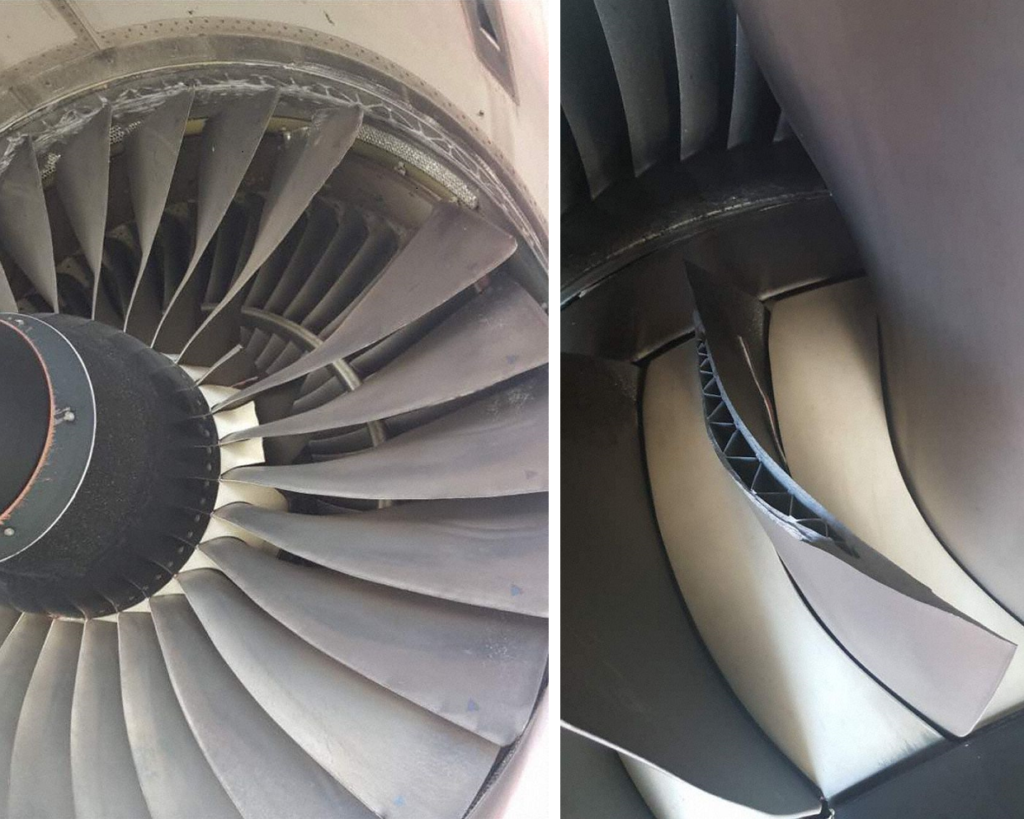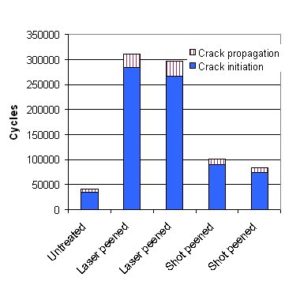Turbine Blade Failure Rocks Passenger Plane with 359 on Board
Laser shock peening was adopted in the 1990’s by the U.S. Air Force to prevent exactly this type of catastrophic blade failure.
Posted: July 11, 2017
By:
Engine failure at 40,000 feet
An AirAsia flight bound for Malaysia turned harrowing when a fractured fan blade forced an engine shutdown, and passengers endured violent shaking throughout a tense two-hour return to Perth Airport in Australia.
The incident occurred on June 25th, about one hour into the scheduled flight to Kuala Lumpur. Passengers described hearing a loud bang that came from the left engine, followed by severe vibrations that rattled the plane for the duration of the journey.
“It was literally like you were sitting on top of a washing machine,” said 24-year-old passenger Brenton Atkinson in an interview with Australian Broadcasting Corp. “We could see the engine out the window which was really shaken on the wing.”
That shaking engine, a Trent 772 manufactured by Rolls Royce, was the result of a fractured fan blade that caused a severe imbalance in the rotating machinery. The pilot shut off power to the affected engine, but airflow continued driving the unstable turbine sending powerful vibrations throughout the body of the plane.
The frightening ordeal was captured on video by panicked passengers, and footage of the incident quickly went viral on social media around the world. This clip from ABC News shows the violent shaking experienced within the cabin, along with the wobbling engine bouncing precariously beneath the wing.
The pilot of the Airbus A330 managed to safely land the aircraft back in Perth, but gave passengers a scare when he instructed everyone to “pray for safety”. The concern for the aircraft was serious enough that emergency crews in Perth prepared for a crash landing and potential water rescue.
Several images were released of the fractured blade, but a full investigation into the cause will likely take months.

The photos show a clean fracture above the blade root, and damage to surrounding blades from the liberated fragments. The incident serves as a sobering reminder of the dangerous consequences of metal fatigue and failure.
Laser peening prevents cracking and failure
Laser shock peening was adopted in the 1990’s by the U.S. Air Force to prevent exactly this type of catastrophic blade failure. Laser peening was found to be the only surface enhancement method powerful enough to inhibit dangerous fatigue cracking that had previously endangered pilots.
While it’s premature to speculate on specific causes of the blade detachment that occurred during this AirAsia flight, such fractures are invariably preceded by cracking within the material.
As combustion turbine blades are subjected to repeated loading for millions of cycles, microcracks develop on the surface at locations of concentrated tensile stress. These cracks propagate deeper into the material with successive cycles before the blade succumbs to sudden catastrophic failure during operation.

Engineers work to prevent these failures by enhancing the metal surface with beneficial compressive residual stresses. When compressive stresses are present within a component, the tensile stress required to initiate surface cracking increases considerably, and the rate at which cracks propagate through the material is reduced.
Laser peening is so effective because it generates deeper compressive stresses than any other surface treatment, providing superior crack inhibition and optimal part protection. In an industry where component failures can cost lives, an extra millimeter of compressive stress depth can make the difference between a routine flight and an aviation disaster.
Fortunately for the 359 passengers on board AirAsia flight D7237, the plane landed safely in Perth with no injuries reported. The incident could have been far costlier had the aircraft suffered additional damage from ejected blade fragments or the violent shaking that ensued. In addition to the pending investigation, the 200-million dollar aircraft will undergo a full inspection before returning to operation.
In-flight blade fractures like this are rare as manufacturers increasingly apply laser peening to enhance resistance to cracking and fatigue. But when a blade does break unexpectedly, and hundreds of passengers experience the frightening turbulence of an unbalanced engine, we’re reminded of the critical role laser peening metal enhancement plays in making air travel safer around the world.
Contact LSPT for more information about laser peening for turbine blade enhancement.
Interested in Seeing More?
Tell us about your application, material, or failure mechanism and we will have one of our experts reach out to you. Our extensive library of research and years of experience gives us a unique advantage to apply a finite element analysis to help diagnose the best application for your situation.
